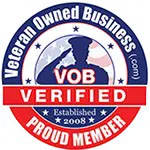Aaah…that new home smell.
It’s the same feeling you get inside a brand-new car. Only 10x better.
But if you’ve never bought one before, a home that’s never been occupied can also cause some stress.
These are the 5 biggest issues you can expect to find after moving into a Kansas City new construction home.
1. Settlement cracks
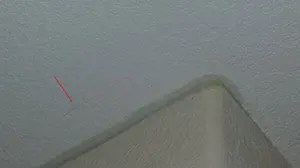
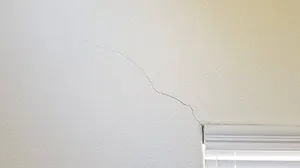
By far the biggest surprise with new construction homeowners.
The once pristine drywall at the corners of some of the most widely-used doors and windows now has hairline cracks.
But 99% of the time, this is normal and unavoidable.
You see, the builder dug a big hole out of a fresh plot and placed a big, heavy house inside. It’s not reasonable to assume there won’t be at least a little bit of movement.
And because the build quality of most of today’s homes is so high, there won’t be much (if any) while it’s empty.
It’s not until you show up with your family and furniture that drywall cracks appear.
Fortunately, once you know what they look like, they’re easy to spot.
Normal new construction settlement cracks (<1/4″ wide) happen at weak spots and points of concentration.
That means you’ll see them at drywall tape and the corners of doors and windows.
You can also expect the same vertical and diagonal spider cracks to appear in your foundation.
By the way, if any cracks grow larger >1/4″ wide, that might be a sign of an underlying structural issue.
At that point, take a step back and look at the areas above, beside, and below the crack(s).
If you notice shifting or movement happening to the entire area, it’s time to call a professional. If not, keep watching to see if it grows (it might stop).
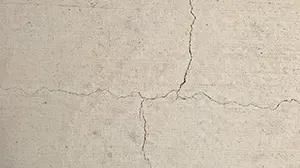
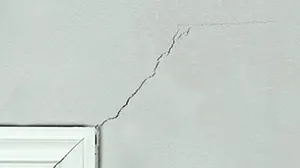
2. Squeaky floors
As a former mediator between home builders and new homeowners, this is the second biggest complaint I heard.
In a nutshell, it’s annoying but not usually a structural concern.
Squeaking happens when there’s friction caused by movement between the floor and sub-floor and it’s usually caused by a couple of things:


1. Seasonal moisture. The home gets dry is the winter and damp in the summer, which causes the wood flooring materials to expand and contract.
2. Sloppy work. Harsh, but true. Your floor is attached to the sub-floor with fasteners and glue. If the floor guys miss the joists underneath, your weight will cause squeaking (especially away from the wall).
Fortunately, you can buy squeaky floor kits at most hardware stores that tighten the floor by screwing it to the floor joists.
This method works best with carpet and when the floor is right above an unfinished basement.
3. Rubbing doors and windows
Cracking means movement.
And with new construction homes that often means movement at the corners of doors and windows.
This is normal.
But, if you notice they start to bind (not shut), follow the same advise as settlement cracks and look at the bigger picture.

4. Plumbing leaks
When a home is built, you might be hiring the builder, but he’s not actually hammering the nails.
His sub-contractors are.
This means there are alot of moving parts and lots of room for error.
And when plumbing components are not carefully installed, leaks happen.
Especially when the home is vacant and no one is running the water enough to make sure the drains stay watertight.
Leaks in new construction homes are most often found at sinks, showers, tubs, and cleanout caps.

But, bigger, more expensive and damaging problems are also sometimes found at the main sewer line inside and outside the home.
Needless to say, water problems and the damage it causes is something you want to find BEFORE you move in.
So when a home is vacant, a good home inspector will make sure the water is running through the drains the entire inspection.
5. Missing handrails
Three steps or more.
That’s the guideline.
Whenever you have 3 or more steps anywhere in the home, you should have a handrail.
In new construction homes, handrails are usually forgotten at garage, patio, attic, and walkout steps.

Bonus: Missing kickout flashing
This bent piece of metal keeps water from penetrating behind the siding and causing damage inside the wall.
It’s an important part of your home’s watertight integrity, but somehow this simple accessory is often missed by roofers in alot of new construction homes.
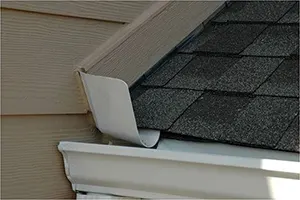
The Good News
This information is only meant to warn you, not scare you.
Because along with the sweet smell of fresh carpet, you also get a 12-month warranty with every new construction home you purchase in Kansas City.
This means ALL the issues you find during your first year – big and small – get repaired at the expense of the builder or home warranty company.
Just remember to keep a running tally of every. little. thing. and send the list to your builder AT LEAST 1 MONTH before your 12th month is over (ask ahead of time if they prefer the entire list at the end of the year or if you should contact them as things pop up).








